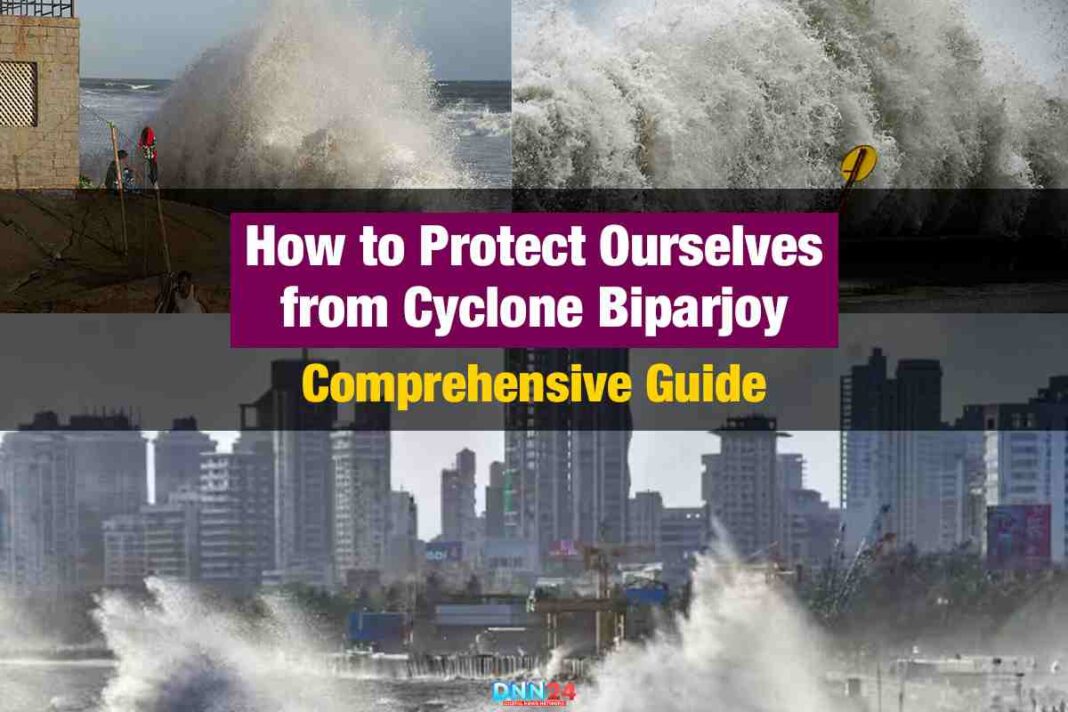Cyclone Biparjoy, meaning “disaster” in Bengali, is a severe cyclonic storm that has caused heavy rainfall and intense tidal waves in several parts of India, particularly Gujarat and Mumbai. The India Meteorological Department (IMD) has issued a red alert for Saurashtra and Kutch coasts, indicating the potential for significant damage. In this comprehensive guide, we will discuss how to protect ourselves from the impact of Cyclone Biparjoy and ensure the safety of our communities.
Understanding the Threat: Cyclone Biparjoy’s Path and Intensity
According to the IMD, Cyclone Biparjoy is projected to land between Mandvi in Gujarat, India, and Karachi in Pakistan. It is essential to be aware of the storm’s trajectory and its potential risks. By staying informed and taking necessary precautions, we can minimize the impact of the cyclone on our lives and surroundings.
Stay Updated with Reliable Information Sources
One of the most crucial steps in protecting ourselves from Cyclone Biparjoy is to stay informed through reliable information sources. Pay close attention to updates from local authorities, government agencies, and meteorological departments. Regularly monitor weather forecasts, news bulletins, and official social media channels for the latest updates and safety instructions.
Evacuation Planning and Preparedness
To ensure our safety and the safety of our loved ones, it is essential to have an evacuation plan in place. If you reside in an area prone to cyclones or close proximity to the expected landfall location, consider the following measures:
Identify Evacuation Routes and Shelters
Map out the nearest evacuation routes and identify designated shelters in your locality. Familiarize yourself with the quickest and safest ways to reach these shelters. Share this information with your family and neighbours to ensure everyone knows the evacuation plan.
Prepare an Emergency Kit
Assemble an emergency kit with essential supplies such as non-perishable food, drinking water, batteries, flashlights, a first aid kit, necessary medications, and essential documents. Keep the kit readily accessible and ensure it can be quickly grabbed during evacuation.
Secure Your Property
Take necessary precautions to secure your property and minimize potential damage. Trim trees and branches that may pose a risk during strong winds. Secure loose items in your surroundings, such as garden furniture or equipment, to prevent them from becoming hazardous projectiles.
Safety Measures During the Cyclone
During the cyclone, it is crucial to prioritize personal safety and follow recommended safety measures. Here are some guidelines to keep in mind:
Stay Indoors and Seek Shelter
Remain indoors throughout the cyclone and avoid venturing outside unnecessarily. Seek shelter in the most vital part of your house, away from windows and doors. If you are in a low-lying area prone to flooding, move to higher ground or a designated shelter.
Stay Away from Coastal Areas
Avoid coastal areas, riverbanks, and beaches during the cyclone. Powerful winds, storm surges, and tidal waves pose significant risks, and being near these areas can be extremely dangerous.
Disconnect Electrical Appliances
To prevent electrical hazards, disconnect all non-essential electrical appliances and turn off the main power supply to your home. Unplug electronic devices and keep them away from water sources to avoid the risk of electric shocks.
Stock Up on Drinking Water and Food
Ensure an adequate supply of drinking water and non-perishable food items lasting several days. In the event of power outages or disruptions in the water supply, having essential provisions readily available will help you sustain through the aftermath of the cyclone.
Post-Cyclone Safety Measures and Recovery
Once the cyclone has passed, it is important to remain cautious and take the necessary steps for post-cyclone safety and recovery:
Beware of Hazards
Be cautious while venturing outside after the cyclone. Watch out for fallen power lines, damaged structures, and other hazards. Report any emergencies or hazardous situations to the local authorities.
Follow Local Instructions
Follow the instructions and guidelines provided by local authorities regarding the cleanup and recovery process. Be patient and cooperate with government agencies and relief workers, actively restoring normalcy in the affected areas.
Check for Structural Damage
Inspect your property for any structural damage before entering. If you notice significant damage or suspect structural instability, avoid entering the premises and seek professional assistance.
Seek Medical Attention if Required
If you or anyone in your family requires medical attention due to injuries or health concerns resulting from the cyclone, seek medical help promptly. Contact local medical facilities or emergency services for assistance.
Conclusion: Prioritize Safety and Preparedness
Protecting ourselves from the impact of Cyclone Biparjoy requires proactive measures, preparedness, and adherence to safety guidelines. By staying informed, planning for evacuation, and following safety measures, we can minimize the risks and ensure the well-being of our communities. Personal safety should always be the top priority during natural disasters.
Also Read: Exciting Job Opportunity: Constables Recruitment in Bihar Police
You can connect with DNN24 on Facebook, Instagram, Twitter and subscribe to our YouTube channel.



